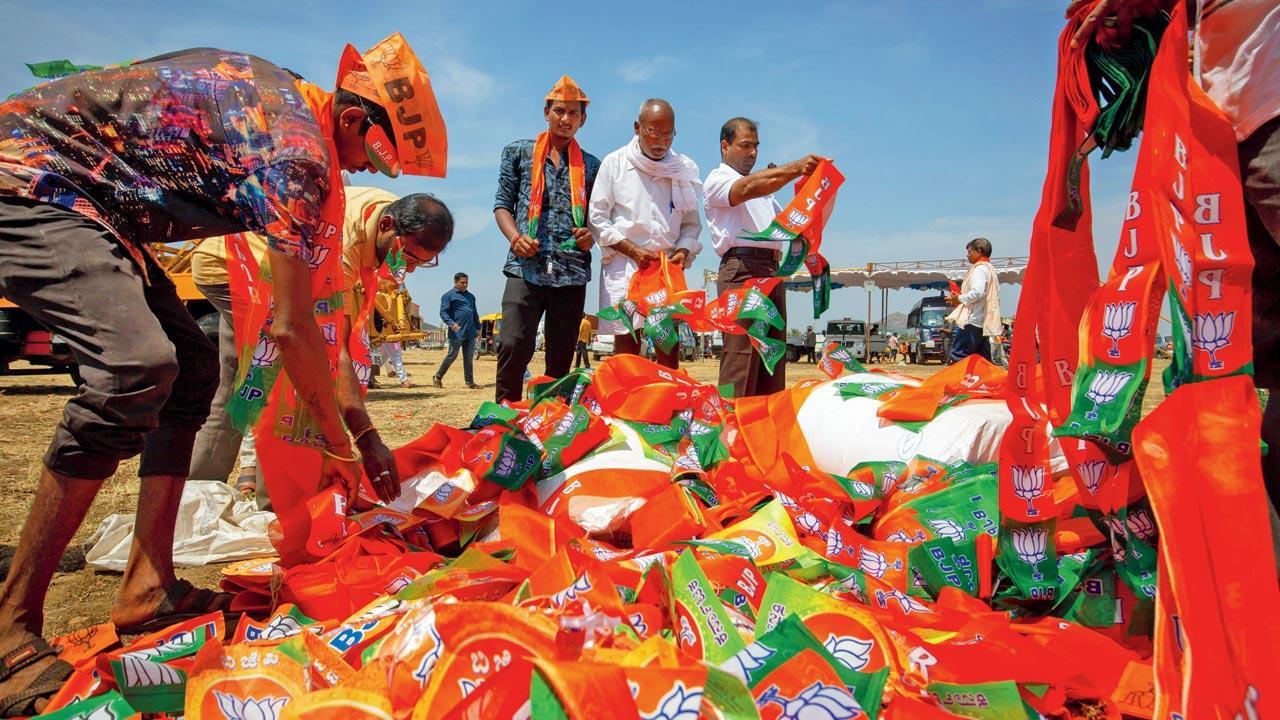Home / Sunday-mid-day / / Article /
‘It’s not going to be simple’
Updated On: 10 September, 2023 07:20 AM IST | Mumbai | Jane Borges
Even as a panel is looking into the government’s recommendation of One Nation, One Election, experts on either side of the divide shine light on what this would mean for the world’s largest democracy

Men pick up scarves and caps as they arrive to attend a political event organised by the Bharatiya Janata Party addressed by Prime Minister Narendra Modi at the GMIT College Grounds in March 2023 in Davangere, Karnataka. Chief election commissioner of India Dr SY Quraishi tells mid-day election expenditure can also be desirable. The juggernaut offers jobs to the poor and workers on the ground, leading to a boost to the economy. Pic/Getty Images
A lot has changed since the first general elections were held in India, starting October 25, 1951. Apart from it growing to become fiercely competitive, with extravagant amounts of money being pumped in, and newer parties joining the fray, the simultaneity of the elections have long disappeared. Back in the day, all the newly-formed states had also gone to polls around the same time; this trend continued for nearly 15 years—elections to the Lok Sabha and state Legislative Assemblies were held simultaneously between 1951 and 1967. But the premature dissolution of certain Legislative Assemblies in 1968 and 1969, broke the chain. “In 1970, the Fourth Lok Sabha was itself dissolved prematurely and fresh elections held in 1971. The term of the Fifth Lok Sabha was extended till 1977 under Article 352 (Emergency),” writes Kishore Desai, former OSD, NITI Aayog and Economic Advisory Council to the Prime Minister (EAC-PM), in a discussion paper. Subsequent instances of dissolution of Lok Sabha and State Assemblies followed, causing “the cycle of simultaneous elections to be firmly disrupted”.
The Centre’s One Nation, One Election plan hopes to put the cycle back in order. If Desai’s paper is anything to go by, it posits the idea that elections to all the three tiers of government—Lok Sabha, state assemblies (vidhan sabha) and panchayats/urban municipal bodies—happen at the same time. Earlier this week, a high-level committee led by former President of India Ram Nath Kovind held its first meeting to study the recommendations of holding synchronised polls.




